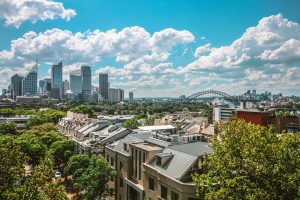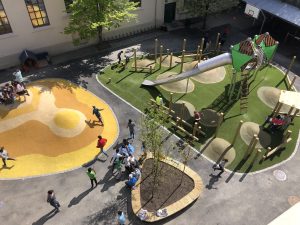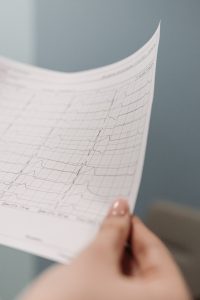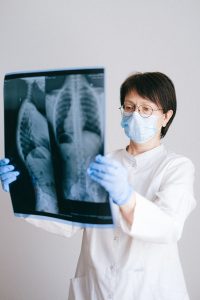10 Sophia Sparks
By Anonymous, Kelli Nicola-Richmond & Danielle Hitch

Sophia is a 32 year old woman who lives in inner-city Sydney. She is the daughter of an Indian mother and an Australian father. Sophia runs her own auditing business, which she started 9 months ago. Before this, she was employed in the finance sector across several leadership positions. Sophia enjoys reading and walking with her friends in the local area. She also enjoys connecting with her Indian heritage with her mother and daughter, and they often attend cultural events together.
Home Life

Sophia lives with her partner (Neil, aged 38), daughter (Eliza, aged 6) and two Persian cats (Tia and Beau) in an inner suburb of Sydney. Sophia studied finance at Sydney University, which is where she met her husband Neil. They dated for four years and got married when they were both 25 years old. Neil and Sophia own their home and have a healthy income that allows them to live a comfortable lifestyle. Neil and Sophia are very proud of their home and always ensure it is neat, tidy and well-maintained, inside and out. Sophia’s parents are both retired professionals who live nearby in Newtown. They talk to and visit Sophia once or twice a week and are loving and supportive. Her parents are also actively involved in caring for their granddaughter Eliza and support Sophie with childcare if her usual after-school arrangements are unavailable or she is working long hours. Sophia’s sister (Alice, aged 28) lives in Melbourne with her husband and two young children.
“With both of us trying to work full time, life is hectic. We are lucky to have Mum and Dad nearby to help.”
Community

Sophia lives in the suburb of Balmain, near Sydney Harbour. Balmain is a quiet, leafy suburb with nice parks and harbour-side walks. It is a quick commute into the Central Business District, where both Sophia and Neil work. They use public transport via the harbour ferries or buses to commute to work and their own cars for all other transport, although traffic in the area can make travel times longer than they would like. Sophia and her family love living in Balmain and the easy access to the water, where they have a small sailing boat that they use on the weekends. Eliza attended kindergarten in the local area and is now at the local Catholic primary school. Sophia has a wide social group based on the parents she knows from school and also contacts from her workplace.
“We love the water and spend time on the harbour whenever we can.”
Health
Before the COVID-19 pandemic, Sophia had always been fit and healthy. She attended the gym three mornings a week before work, walked on the weekends with friends and regularly went sailing and swimming. She had no pre-existing illnesses or disabilities. She and Neil would like to have another baby but have not been able to get pregnant. Recently they have been talking about trying IVF, although they have put this on hold since she developed Long COVID.
COVID-19
Acute Infection
Sophia contracted COVID-19 in early December 2021 at a workplace Christmas party. The first few days felt very similar to a seasonal cold, as she experienced a runny nose, cough, sore muscles, headache and exhaustion. She also experienced some loss of taste and smell, which she found disconcerting. While her sense of taste and smell returned in the third week, she noticed some foods ‘didn’t taste quite right’. In the second week, the infection began to affect her lungs more severely, and breathing became more difficult. Sophia had never experienced breathlessness before, and being unable to get ‘enough air’ made her feel very anxious. She also noticed she was becoming more stressed generally about her symptoms and was beginning to wonder if she would ever get better.
Despite feeling very poorly, Sophia went ahead with all the events and activities of Christmas week as usual because she didn’t want to let Eliza down. While no longer infectious, she also found it difficult to deal with the questions and suspicions of others about her symptoms. On several occasions, she was berated by others who refused to believe she had clearance to leave quarantine and told her she was putting everyone around her at risk. Her breathlessness improved slightly in the fourth week but returned whenever she undertook more than very gentle exercise. Sophie continued to experience a runny nose and exhaustion, but her cough and muscular soreness had resolved by the end of December.
Developing Long COVID
After the rush and bustle of Christmas, Sophia became more despondent about her ongoing symptoms. Her exhaustion, breathing difficulties and congestion were constant, and she was finding it harder and harder to concentrate. Even sitting in front of the television at night was too demanding, as she could now not follow the storylines of her favourite programs. Reading was virtually impossible, and she simply didn’t have the energy to go to the park or down to the harbour with Eliza. Neil began taking on these tasks for her so her daughter could still enjoy her summer holidays, but Sophia felt increasingly upset about being ‘left behind’ in the house while they went out and had fun together.

Sophia had returned to work around a month after becoming infected, having used a combination of sick and holiday leave over the festive period. She hoped that returning to a routine would help her ‘snap out of it’, and she was impatient to return to her normal life. Her GP had advised her to return to work gradually and slowly increase the amount of activity she completed each day. However, Sophia was concerned that her business would suffer without her playing a more active role and attempted to return full-time immediately. It soon became apparent that she was making many mistakes at work, and she felt mortified that they were being noticed and commented upon by her colleagues. Their criticism felt like discrimination and bullying, and it was left up to Sophia to try to explain Long COVID and how it was impacting her capacity to her colleagues. While she could take time away from work, she did not feel able to delegate her responsibilities to others, which left significant gaps in the workflow that led to conflict with other staff. Sophia’s two best employees decided to leave the business due to these issues, meaning she needed to quickly go through the recruitment process to fill their roles. While her colleagues were generally very supportive of her, Sophia felt immense pressure to work harder and speed up her recovery. She has begun to wonder about selling the business but does not want to lose all the hard work she put into its founding and development.
“It was just like I’d be walking around and I’d go to do something and then I’d be like, hey, wait, what am I doing? I’d be trying to remember processes within the computer system, which I’ve used for years and years.”
Sophia just couldn’t understand why she was still so unwell when everyone else she knew had made a quick and full recovery from COVID-19. Initially, she had held out hope these symptoms were just a hangover like sometimes happens after a ‘bad cold’, but this was rapidly ebbing away.
“What was wrong with me? I don’t usually just drop my bundle when things get tough.”
Three weeks after returning to work, Sophia experienced a significant relapse in breathlessness and exhaustion. Aside from attending work, she spent most of her time asleep in bed or on the couch. Now she found she was beginning to have micro naps in the office and (even more concerningly) when driving her car. Sophia began to experience panic attacks while breathless and during meetings. While she had a history of these attacks previously in life, she found she could no longer use the management strategies that had previously served her so well. Although she could physically breathe, she didn’t feel as if the oxygen was going where it needed to go. Lifting and bending became extremely challenging and walking to the corner shop and back resulted in her immediately needing to sleep. Every moment of the day was clouded with brain fog, which she described as feeling similar to jet lag after a 24-hour flight. Any stress or fatigue trigger seemed to bring on more severe congestion, leading to her needing to have extra rest for another three or four days.

Socialising was also extremely tiring, as she no longer wanted to travel to see anyone and couldn’t keep track of face-to-face or telephone conversations. As a result, she feels that her friends are drifting away as they don’t know how to help her. One of her friends also told her that she should “check her priviledge” because she is far better off than most people and should focus her attention on helping people who are “really doing it tough” instead of feeling sorry for herself. While their tough love approach was intended to be helpful, it only made Sophia feel more anxious, despondent and ashamed. Only two people in her personal life seemed to really understand her condition and accommodated her needs – her mother and a long-time friend (Rosie). Sophia lost her patience with people who tried to offer amateur medical advice, recommended diet changes or supplements or seemed to need constant reminding that she had Long COVID as they forgot about her invisible disability.
“When you have Long COVID, just catching up with one friend for a coffee can be an overwhelming experience that you have to save up energy for. When you add driving onto a simple catch-up, it gets even more draining, and may even require you to budget an entire day off to recover.”
She also felt a growing reluctance to socialise outside of her family because Sophia was terrified of catching COVID-19 gain. When she did catch up with friends, she insisted on outdoor venues and prior rapid antigen testing (RAT). Still, as Australia began to relax community restrictions, she found people were less willing to accommodate her needs. Sophia also attempted to maintain mask-wearing and other restrictions in her workplace but grew tired of fighting resistance from her staff and relented. Her inability to enforce these precautions means she sometimes feels unsafe in the workplace.
“Eveyone else has just moved on. COVID is over, isn’t it? Not for me, but what right do I have to complain – I’m so much better off than most people”.

It became obvious to Sophia after three months that her symptoms, such as fatigue, congestion, breathlessness and poor exercise tolerance, were not going away any time soon. The GP that had been issuing doctors certificates for work confirmed that Sophia now had what was considered ‘Long COVID’ but told her there were few guidelines and no medications available to treat it. After four months, her GP decided to do follow-up tests to exclude any other explanations for her symptoms. These included blood tests, a lung scan, and an electrocardiogram (ECG). Her B12 levels were found to be low, but this issue was resolved after Sophia received B12 injections. Both her lung scan and ECG were reported as normal. Sophia also began to notice new symptoms emerging. She was now very sensitive to light and sound and often experienced pins and needles in her hands and feet. While she knows some of these sensations may be due to stress and anxiety, Sophia wonders if her sensory sensitivity is related to her COVID-19 infection. She mentioned this problem to her GP, who said he believes she is focusing too intently on her symptoms, and this is causing her to be hypervigilant about normal bodily functions. While Sophia acknowledges this could be the case, she still feels that something has fundamentally changed with her health and well-being.
“I’m not the same person since COVID-19… my body is different… and I know my body better than anyone else”.
However, Sophia did accept the offer of a mental health care plan from her GP and went to see a psychologist. While the psychologist was very supportive, she found talking about her Long COVID made her feel worse, so she stopped going after three sessions. The GP also referred her to two different Long COVID clinics and one fatigue clinic, saying he was hopeful at least one of them would be available to provide her with specialist advice. When Sophia followed up with each of them, all of their waiting lists were at least 8-12 months, and there was no guarantee the Long COVID clinics would continue to receive funding. She independently went to see a physiotherapist for hand pain, which developed due to her new habit of working on her laptop while resting in bed as a strategy for preserving her energy. The hand pain was so severe it impacted her ability to do her job. The physiotherapist told her there was nothing wrong with her hand muscles and recommended movement and exercise to improve blood flow into the limbs. When Sophia asked how to manage this in light of her fatigue, he said that wasn’t his area of expertise and suggested she go elsewhere for more specialist advice. While she could understand some level of ignorance from the general public, Sophia felt the lack of education about Long COVID she encountered from some health professionals was inexcusable given the rapidly increasing number of patients they must have seen with this condition.
“I don’t expect them to know everything, but by now they should no something!”.

Sophia’s GP diagnosed her congestion as asthma and prescribed Symbicort and Nasonex. After months of experiencing severe congestion, she asked to be referred to a respiratory physician and was lucky enough to get an appointment within 8 weeks. The respiratory physician ordered a spirometry test and told Sophia to stop taking the asthma medication for now and return in a few months for a review of her asthma diagnosis. She believed the congestion was caused by bronchitis, and she prescribed Sophia a low-dose antibiotic three times a week to stop the overproduction of mucus. The antibiotics were very effective, and for the first time in her recovery, Sophia felt hopeful and reassured. With the congestion gone, she felt more confident about increasing her exercise. The respiratory physician told her that increased physical activity (particularly walking up hills) was recommended to improve her lung function. She gave her a clear action plan as to how to increase her exercise without overdoing it. No doctor up to this point had offered any guidance around exercise, and while still very compromised, Sophia has managed to slowly increase physical activity in recent weeks.
Current Situation
Sophia now has a regular exercise routine – a 30-minute walk and stretch every morning – which helps with the hand pain and congestion, as well as general health. Some days she can’t manage it, but other days she does 45 minutes or an hour of walking, so it balances out. She has realised that health professionals are limited in what they can offer, so she is taking advice on pacing her activities from a new friend with Long COVID (Lela) who has been receiving care from a Long COVID clinic. While it’s not ideal for getting second-hand information, she feels it is the closest thing to medical advice she can access right now. Sophia tries not to think about her Long COVID too much, instead focusing on what she can control, such as seeing friends more often and achieving her work and exercise goals.
“I’m learning to break up normal activities into sections and introduce breathing time where there normally isn’t any”.
Sophia is looking for a GP that can help offer holistic health advice that supports her in making right decisions for her health and well-being instead of a more traditional biomedical approach. She would particularly like some advice on participating in work more sustainably and whether to make an insurance claim through her superannuation for lost income. Sophia would also like to see a doctor that is up to date with all the Long COVID literature so that the burden doesn’t fall onto her – she no longer wants to have to educate the people she seeks care from. She wants someone who is willing to listen to all the evidence and experiences she has had during this pandemic and offer advice tailored to her individual situation.
“Honestly, that’s not my job – I’ve got more than enough to do!”
Life Roles
Since developing Long COVID, Sophia has experienced changes in many of her life roles.
| Role | Before COVID-19 | Currently |
| Worker | Sophia was a full-time business owner and principal auditor – an extremely demanding, emotionally taxing role. | She now works part-time (approximately 20 hours per week), and the business is taking in less work to accommodate her cognitive and rest needs. |
| Home Maintainer | Sophia previously shared household tasks with Neil. Sophia did most of the cooking and washing during the working week. | Neil now undertakes the bulk of the housework and home maintenance. Sophia still tries to prepare the meals, given that she works fewer hours. |
| Friend | Sophia had a group of close girlfriends that she often saw for group walks. She and Neil also socialised most weekends with people from the sailing club. Sophia also had two work colleagues she usually had lunch with and occasionally saw outside of work. | Sophia has lost contact with many of her previous friends and work contacts. However, she has become close with Lela, who also has Long COVID and supports her. She has also stayed in close, supportive contact with a friend that she has known since school (Rosie), and they have recently resumed walking together (albeit short distances). |
| Family Member | Sophia would often drop by her parents’ place socially, and she and Neil also hosted them for dinner every Thursday. Her parents also assisted her with incidental child care. Every six months or so, Sophia would travel to Melbourne for work and would extend her stay by a few days to catch up with her sister (Alice) | Sophia continues to see her parents frequently, who have been very supportive (particularly her mother). However, Thursday dinners have not resumed, and she feels as though they and her husband have become her carers to some degree. Her sister calls to check on her twice per week, but Sophia has not seen Alice since contracting COVID-19. |
| Community Member | Sophia was a member of the Sailing Club executive committee and frequently volunteered at events held at Eliza’s school. | Sophia has not resumed these community activities since contracting COVID-19. She hopes to return to sailing soon but feels that she will need to limit her community involvement for some time. She has, however, managed to participate in some brief online events recently. |
| Caregiver | Sophia previously took Eliza to most of her extracurricular activities and would often help her prepare for school. Neil has always liked to get Eliza into bed at night and read to her. | Neil now helps more with the day-to-day parenting and running around for Eliza. Neil has reduced the previously long hours he spent at work so that he can be home more to help, but he would also like to return to his original working hours. |
Craftwork. Photo by Anna Shvets from Pexels / Driving. Photo by Daniel Andraski from Pexels / Shopping Delivery. Photo by RODNAE Productions from Pexels.
Activities of Daily Living
Along with these changes in her life roles, Long COVID has negatively impacted many of Sophia’s activities of daily living.
| Activity | Before COVID-19 | Currently |
| Showering/Bathing | Independent and typically takes a shower. | In the early stages of Long COVID, Sophia stopped showering every day because it was too exhausting and didn’t feel necessary. Her partner complained, so she tried to direct her energy and time towards showering. While she can complete the task now, it still takes her longer and leaves her feeling more drained. |
| Eating | Sophia and Neil would typically prepare most meals at home during the week and go out for breakfast and dinner at least once on the weekend. Sophia was committed to the family eating very healthy food. | Sophia eats much more take-away food now, particularly for tea, when she has spent all her energy on the day. |
| Walking/Moving around | Sophia was very active, walking 5 km at least three times per week and attending the gym for 45 minutes twice weekly. She also sailed on the weekends. | She has spent the last three months building up her walking capacity to 30 minutes a day, but there are still 2-3 days per week she cannot manage that distance. |
| Personal Hygiene/grooming | Sophia prided herself on being well groomed, attending the hairdresser consistently every four weeks for a trim and colour. | Sophia no longer visits the hairdresser for fear of catching COVID-19 again and due to the extra effort required to get there. She can maintain an acceptable level of hygiene and grooming but feels ‘scruffier’ than she did previously. |
| Sexual activity/intimate relationships | Sophie and Neil had a strong relationship with regular opportunities for sexual activity and intimacy. | Sophia’s fatigue has greatly reduced her ability to participate in sexual activity. Her brain fog also impacted the energy she has available for emotional conversations and intimacy. Both she and Neil feel this has negatively impacted their relationship. |
| Driving/public transport | Sophia previously caught the ferry or bus to work in the city and drove at all other times. She did not experience any significant challenges with community mobility. | Driving requires a high concentration level, and doing this activity for more than 20 minutes at a time completely drains Sophia. She often feels unsafe driving due to fatigue and has transitioned to working from home some days as a management strategy. Sophia also avoids public transport due to the perceived heightened risk of contracting COVID-19 again. |
| Money management | As a dual-income family, Sophia and Neil had a high income that allowed them to spend fairly freely. They would typically take an overseas trip once a year to see friends and show Eliza the world. | Sophia’s income has halved due to the impact of both the pandemic and her Long COVID on her business. Neil’s income remains healthy, but they now have to watch their spending more closely than they used to and cannot afford some activities they used to enjoy. |
| Shopping | Sophia enjoyed going to the supermarket, typically early on a Sunday morning, so that she could be planned and ready for the meals for the week. | Sophia orders groceries online, and they get delivered to her doorstep. However, even logging on to make the order sometimes can feel overwhelming, and she finds it hard to plan what she might need for multiple days. |
| Rest/sleep | Sophia was active and energetic and would consciously limit her time in sedentary activities. She would retire to bed at about 11 pm, usually sleeping soundly until 6 am. | Sophia needs much more rest time and does not sleep soundly at night. While she still goes to bed around 11 pm, she is now lucky to get 4 hours of sleep per night. She gets up and watches Netflix when she can’t sleep so she doesn’t disturb Neil, and she feels like she is wasting her time on such meaningless activities. |
| Caring for others | Sophia was responsible for most of the caregiving during the week for Eliza when she was not in after-school care. | Neil now contributes the most to getting Eliza ready for school and running her to activities. He continues to take responsibility for her night-time routine, as this is the time of day when Sophia is most fatigued. |
| Communicating with others | Sophia was able to communicate with anyone independently and could modify her communication to suit the person she was speaking with. | Fatigue affects Sophia’s ability to retain auditory and visual information. At the end of long meetings, Sophia often gets flustered and does not know how to wrap up. She is improving at recognising the warning signs when communication is not going well and knows to return to conversations when less fatigued. |
| Leisure / Recreation | All of Sophia’s recreational tasks were active and physically demanding. They were all undertaken with family or friends. | While waiting for her health to improve sufficiently to return to her previous levels of exercise, Sophia began working on small art and craft projects. |
However, Sophia does not perceive all of the changes in her life as negative. Long COVID has, in some ways, also provided her with new opportunities and the ability to re-evaluate her life.
“Since getting Long COVID, my life has been emptied of a lot of the activities I enjoyed but also a lot of activities I didn’t enjoy but did because it was expected of me. In some ways, it’s a nice break from responsibilities. I try to focus on things I can do now that I would never have made time for before Long COVID, like seeing more of my family, watching sport, dabbling in some art and craft activities. My carbon footprint is a lot lower now, which helps with my environmental conscience. And it’s made me see which people in my life really care about me and which people were just exploiting my goodwill. I think it’s taught me a lot about what I value and what I am willing to spend energy on when I have so little of it”.
Sophia’s Goals
While Sophia feels that she is slowly improving, she still wants to work with health professionals who are knowledgeable about Long COVID on the following goals (in no particular order):
- Developing better strategies to deal with her brain fog and juggle multiple tasks more effectively
- Return to the gym, sailing and her pre-COVID level of fitness
- Engaging with wholistic health care that offers her multiple options for treatment and management
- Better balance of all the different demands on her energy and time
- Better mental health, and in particular, feeling less anxious and stressed
“I just want people to know that Long COVID is incredibly complex. It affects every dimension of daily life and scars relationships in ways that I don’t think most people will ever understand. We have to invent our own culture and ways of doing things to exist and feel safe in the world”.
What does the evidence say?
What is ‘brain fog’?
- People with ‘brain fog’ experience forgetfulness, difficulty concentrating, dissociative phenomena, cognitive ‘slowness’, greater cognitive effort, communication difficulties, ‘fuzziness’, dizziness, myalgia, word-finding difficulties, pressure and cognitive fatigue [1,2]
- Brain fog is not unique to Long COVID – it is associated with various other conditions, including psychiatric, neurodevelopmental, autoimmune and functional disorders [1].
Prevalence of brain fog
- A population-based study (n=2696) found a prevalence rate of 62.3% for brain fog in people with Long COVID [4]. Female sex, respiratory symptoms in the acute phase and intensive care admissions were significantly associated with developing ‘brain fog’.
Consumer experience of brain fog
- A UK qualitative study of people with Long COVID (n=50) identified X themes: ambivalence about the appropriateness of the term ‘brain fog’; rich descriptions of neurocognitive symptoms; fluctuations in symptoms over time; profound psychosocial impact on multiple areas of life; feelings of guilt, shame and stigma; self-management strategies; challenges navigating the healthcare system and the search for physical causes [3].
- A study of fifteen Americans with Long COVID highlighted that running a household, driving, employment, and multitasking were particularly difficult due to the synergistic nature of brain fog and overall fatigue [5]. Relationships were also significantly impacted, both within and externally to their family.
References
- McWhirter, L., Smyth, H., Hoeritzauer, I., Couturier, A., Stone, J., & Carson, A. (2022). What is brain fog?
- Jennings, G., Monaghan, A., Xue, F., Duggan, E., & Romero-Ortuno, R. (2022). Comprehensive clinical characterisation of brain fog in adults reporting Long COVID symptoms. Journal of Clinical Medicine, 11(12), 3440.
- Asadi-Pooya, A., Akbari, A., Emami, A., Lotfi, M., Rostamihosseinkhani, M., Nemati, H., Barzegar, Z., Kabiri, M., Zeraatpisheh, A., Farjoud-Kouhanjani, M., Jafari, A., Sasannia, S., Ashrafi, S., Nazeri, M., Nasiri, S., & Shahisavandi, M. (2022). Long COVID syndrome-associated brain fog. Journal of Medical Virology, 94, 979-984. doi:10.1002/jmv.27404.
- Chasco, E.E., Dukes, K., Jones, D., Comellas, A.P., Hoffman, R.M., & Garg, A. (2022). Brain Fog and Fatigue following COVID-19 Infection: An Exploratory Study of Patient Experiences of Long COVID. International Journal of Environmental Research and Public Health, 19(23),15499. doi:/10.3390/ijerph192315499

